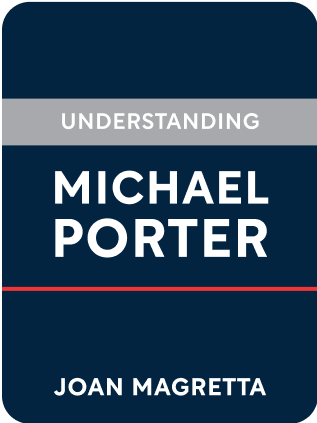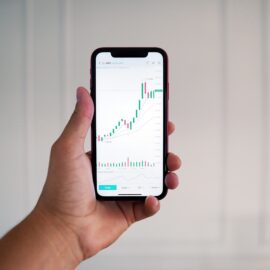

This article is an excerpt from the Shortform summary of "Understanding Michael Porter" by Joan Magretta. Shortform has the world's best summaries of books you should be reading.
Like this article? Sign up for a free trial here .
What are strategic trade-offs in business? What kind of strategic trade-offs do you have to make?
According to Michael Porter, strategic trade-offs force you to focus your business’s strategy by making certain things incompatible. In sum, you can have it one way or the other, but not both. Learn what this means in business.
Strategic Trade-offs
Trade-offs are strategic forks in the road. If you take one path, you cannot simultaneously take the other. The choices are incompatible.
- For example, in contrast to hub-and-spoke models, Southwest uses a direct-flight model. You’re either hub-and-spoke, or you’re direct-flight. There is little middle ground.
- Likewise, Southwest didn’t serve meals at a time when most airlines did. You either serve food, or you don’t.
Trade-offs force you to limit your value proposition. With trade-offs, your activities can be tailored/optimized to your value proposition. Without tailoring, your value chain will have inefficiencies that more focused competitors will exploit.
Trade-offs also make it difficult for competitors to copy what you do without compromising their own strategies. In a situation with strong trade-offs, your competitors’ activities, tailored to their value proposition, are incompatible with your activities.
Trade-offs arise in three ways:
- Product trade-offs: Tailoring a product to suit one need makes it less capable of servicing another need.
- McDonald’s fast and cheap hamburgers are incompatible with the needs of a health-conscious farm-to-table eater.
- In 1987, major semiconductor companies manufactured their own chips and sold excess capacity to smaller firms. These smaller firms feared that the major companies would steal their IP. Taiwan Semiconductor made the choice to be a strictly OEM manufacturer, selling IP security as part of its offering.
- Home Depot innovated with huge warehouses with well-trained associates to appeal to DIYers and contractors, mostly male. In response, Lowe’s appealed to women (the driving force for home improvement projects) through more inviting stores and inventory emphasizing home fashion, appliances, and decoration.
- Operational trade-offs: Activities that deliver one kind of value are less efficient at producing another kind of value. If an activity is over- or under-designed for its use, value will be destroyed.
- A value chain for deliveries that optimizes cheap shipping that arrives in weeks requires different activities from fast shipping that arrives in hours.
- The value chain that services In-N-Out’s fresh never-frozen hamburgers is not suited for McDonald’s frozen, lower-cost hamburgers.
- Brand trade-offs: Muddling the brand identity compromises why fans support the brand.
- Ferrari can’t put out a minivan, and Mini can’t put out a supercar.
Robust strategies incorporate multiple trade-offs. The best strategies have trade-offs at almost every step in the value chain.
Mistakes
Straddling/Scope Creep
The temptations to be something for everyone are strong. Willfully ignoring large segments of customers feels like leaving growth on the table. Product designers want their products to do more to get more users. “The customer is always right,” and we want to make all customers happy!
Pressures from financial and management observers are also strong:
- Financial analysts want every company to look like the market favorite.
- Consultants benchmark you against everyone else in the industry, perhaps choosing the wrong metrics for your business (same-store sales, or revenue per employee). If you’re choosing a different positioning, different metrics will be relevant.
- Short-term stock traders put pressure on companies to enact change, while strategy takes years to build.
These itches push companies to straddle their trade-offs, matching the benefits of a different successful position while maintaining its existing position. This can mean designing a product or value chain that services contradictory needs. This leads to inefficiencies, creating openings for focused rivals to deliver superior value or lower prices to customers.
Example: BA started a low-cost airline Go Fly as an independent subsidiary. But Go Fly retained features from BA that were hard to remove, like seat assignments and food service. It sold Go Fly to a private equity firm, which was able to make more of it.
- (Shortform note: this also suggests the difficulty of having a company disrupt itself, especially when the new subsidiary is funded by the parent org. The subsidiary will tend not to be as aggressive as a fully independent competitor that actively seeks to harm its rivals.)
The lesson: deliberately choose not to serve all customers and needs. Otherwise, you risk doing a poor job of serving any customers and needs. Deliberately make some customers unhappy.
Enduring companies have been surprisingly adamant about not compromising their original mission, willfully forsaking short-term growth and defending its key trade-offs against many attacks. Instead of broadening your strategic position, deepen and extend it.
(Shortform note: note that this necessarily suggests inflexibility in company strategy, even in the face of disruption. Applied to Blockbuster in 2000, this approach would suggest, “Your value chain is focused on in-store rentals. Trying to service mail rentals will compromise your advantage.” This can lead to wishful thinking like “people love the experience of walking through stores and holding DVDs. We need to preserve this advantage.” In hindsight, this would be wrong.
From a societal point of view, Porter might say “companies come and go; it’s better for companies that are disrupted to stick to their guns in the case their need endures, rather than straddle and burn capital on a losing strategy.”
So Understanding Michael Porter isn’t as strong in prescribing what to do in the face of rivalry or disruption – it doesn’t guide on how to respond to encroachment from rivals, and how to tell when expanding scope compromises your value chain or not.)
Operational Ineffectiveness Paradox
Typically, cost and quality need to trade against each other. It’s difficult to find a situation where you can reduce cost while increasing quality at the same time.
Yet at times, this doesn’t appear true, and quality and cost don’t seem to necessarily trade off with each other. During the 1980s, Japanese car manufacturers created manufacturing systems that increased quality and decreased cost relative to American manufacturers. It appeared that quality came for free.
Porter argues that this is a false trade-off arising from operational ineffectiveness. When higher quality means eliminating defects and waste, this means you’re not at the efficiency frontier, and you can improve quality and decrease cost at the same time.
Once you’re at the efficiency frontier, changes to your value chain necessarily makes tradeoffs – you cannot increase quality without also increasing cost.
This is also not to say that value chains built around low price can’t offer other dimensions of value. Southwest has low prices, but it also provides customer value in convenience.
Strategic trade-offs might be made up of difficult decisions, but they’re an important part of why a business succeeds. Think about top brands and some strategic trade-offs they may make.

———End of Preview———
Like what you just read? Read the rest of the world's best summary of Joan Magretta's "Understanding Michael Porter" at Shortform .
Here's what you'll find in our full Understanding Michael Porter summary :
- How Porter's famous Five Forces help you analyze every industry
- How IKEA, Southwest Airlines, and Zara have ironclad, defensible strategies
- Why the best companies reject opportunities to focus on what they know






